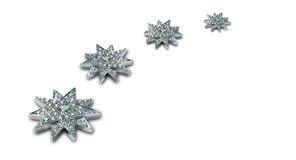
In the southernmost wing of the Palace, Count Antal Grassalkovich II (1734–1794) had a theatre auditorium constructed between 1782 and 1785. 24.5 m long, 8 m wide and 9.5 m high, the space resulted from making the formerly 3-storey wing into one. The walls were decorated with Neo-classical, late Baroque paintings. The theatre was in operation only when the Count was in residence at Gödöllő.
The story of the theatre came to an end in 1867 when it was converted into rooms for the entourage of the royal family.
Reconstruction was completed in August 2003, since then it has provided a venue for high standard performances, and it is now open to museum visitors.
Due to the lack of professional national theatre companies, acting in 18th century Hungary was restricted to schools and to the stages of noblemen. In the southernmost wing of the Palace, Count Antal Grassalkovich II (1734–1794) had a theatre auditorium constructed during reconstruction work between 1782 and 1785. This is the earliest stone theatre with coulisses still standing in Hungary.
24.5 m long, 8 m wide and 9.5 m high, the space resulted from making the formerly 3-storey wing into one. The Rococo-style suite of Cardinal Kristóf Migazzi (1714–1803) Bishop of Vác (constructed for him by Antal Grassalkovich I) fell victim to this reconstruction.
The walls of the theatre auditorium were decorated with Neo-classical, late Baroque paintings. The plastic parastades with Roman capitals are joined by cornices at the top and marble-like pedestals at the bottom. The surfaces between the parastades are adorned with ochre-framed pink fields with garlands. The 90 square-metre stage slanting slightly towards the stalls was equipped with the best technology of the age. The spatial effect of the Baroque stage-set was achieved by means of sliding coulisses and scenery canvases hanging from above (known as soffit) and also by backdrop canvases.
There was no orchestra pit separating the stalls from the stage; the orchestra was only separated from the audience by a low draught-screen. The audience was seated in the stalls and in the two galleries on the rear wall.
The theatre only functioned periodically. Antal Grassalkovich II and his family only spent a few weeks in Gödöllő each year. They spent most of the year in Vienna, Pozsony (Bratislava) and Pozsonyivánka. A private 24-piece orchestra accompanied the duke on his travels, providing the music for theatre performances, church ceremonies and various court events. The conductor and composer for the orchestra was György Druschetzky (1745–1819). Several rooms and a rehearsal room were fitted out for the musicians in the wing opposite the theatre. This was known as the Musicians’ Gangway. German theatrical companies performing in Buda, Pest and Győr came to play here. The performances were often attended by members of the local aristocracy.
There is no information on the theatre for around 7 decades after the death of Antal Grassalkovich II (1794). It ceased to exist in 1867, when the Palace was bought by the Hungarian state and free use of it made over as a coronation gift to Francis Joseph I and Queen Elizabeth. The building was hastily renovated in order to make it suitable for accommodating the royal family and the royal household. All the theatre furnishings were auctioned off and the inside of the theatre was once again divided into three separate floors by inserting two ceilings. A total of 15 rooms together with corridors were constructed on these floors.
This palace layout remained unchanged until 1986, by which time the state of the building had deteriorated so badly due to improper usage following World War II that the ceiling fell in. The theatre building, previously known only from written sources, was identified when the wall-painting extending over all three floors was uncovered. Further examination of the walls also provided clear evidence of traces of the stage equipment of the age.
In order for the theatre to be rebuilt, the floors were removed and the space once more made into one. All surviving sections of the wall-painting were restored and the missing parts reconstructed in a way distinguishable from the original. (These areas are a few millimetres deeper and have less detail.) Above the stage can be seen the ducal variant of the Grassalkovich family coat-of-arms. The stage-set can be altered with the aid of two pairs of revolving coulisses and three pairs of sliding coulisses, as well as the upper and backdrop scenery canvases. The stage equipment has been reproduced based on contemporary analogies. The coulisses can be moved manually or mechanically. Behind the stage, a spiral staircase leads to what used to be Migazzi’s guest room, where the wall-painting has also been restored. (The missing sections are indicated by white patches here.) This now functions as the theatre flies.
The various facilities necessary for running the theatre, such as changing rooms, store-rooms and machinery, have been established on two, newly-built cellar levels. The theatre, which can seat 95, once again became a venue for quality theatrical performances in August 2003. A curiosity of theatrical history, this part of the palace can be visited on guided tours.


